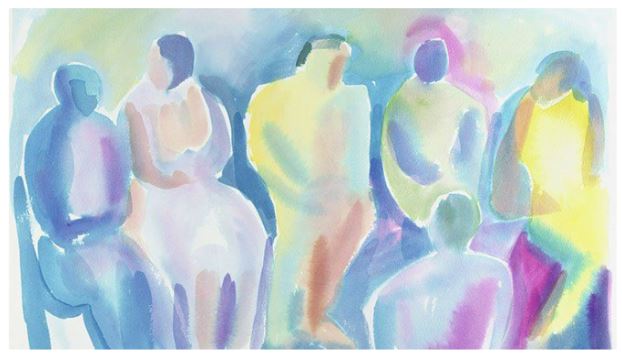One chilly Monday morning, I wake up to calm silence within the house and the entire compound. I assume my mother is awake and go around my daily routine to prepare for work. I shower, get well-groomed, and head downstairs to have my mother’s favorite sandwich breakfast for Monday mornings. The kitchen is silent, and only our pet moves around, making funny noises. I approach the kitchen only to find dirty dishes and no sign of any ready breakfast.
So where is my mother? I try looking for her in the house, but she is nowhere to be found. I call her phone, but it seems to be off. I hear a knock at the door, and it is our neighbor, an older woman, and a good friend of my mother. She seems sad and states, “Your mother is no more. She hanged herself in the backyard.” I fell hard on the floor, which was the only thing I remember from that encounter. Next, I woke up only to find myself on a bed alone in a quiet place.
So, have you ever encountered the death of a loved one through suicide? And was there anyone to lean your shoulder on? How often have you offered mental or emotional support to people who have lost their loved ones through suicide? If your answer is no, you should consider mental and emotional support for people who have lost their loved ones through suicide.
I have been interested in learning the impacts of suicide on the people left behind. Death may be viewed as a natural path of life; however, unusual cases such as suicide pose trauma, emotional damage, discomfort, stress, and anger to people left behind. Suicide in itself has ripple effects that touch us all. Acts of emotional and mental support to loved ones and friends of the deceased can help brighten their day, encourage them and change their outlook on life. So why do people left behind require mental support after the death of loved ones through suicide? Why should we hold their hand and not just let them be alone?
What do you say to a young child whose mother went missing on a chilly Monday morning, only to receive a knock on the door and hear she was seen dangling from a tree? How do you convey the message to other friends, family members, and loved ones? How will the family react to the news? Will the young girl suffer depression after learning about her mother’s death? How will the family respond to this suicide information? Will they become stressed and suffer an emotional breakdown?
Talking about this suicidal information is challenging, but it is crucial, and how people respond to these suicidal cases leads to events of trauma, anger, despair, or distress. The support they receive after the event often has a significant role in shaping their healing process.
Will a young lady whose mother has committed suicide to get so depressed and think of suicide? Surely not acceptable; she needs mental support to facilitate her healing process. There is an actual need to realize that some of these people are mentally affected by the death of loved ones, such that they can also commit suicide.
The impact of suicide has been felt across many states. According to Martinez-Ales et al. (2020), there is an increase in suicidal deaths in the United States. Additionally, there has been a rising trend in the U.S. in the number of suicides, from 1990 to 2022, with recorded statistics revealing that more than 840,000 people have committed suicide over time (Ehlman & Yard, 2022). The suicide deaths have led to severe depression, trauma, and attempted suicide by those left behind (Cha et al., 2017). Shall we continue to lose the loved ones left by the deceased?
Those left behind require mental support to help in their healing process. Post-suicidal mental support directly impacts the emotions of people left behind (Andriessen et al., 2020). Furthermore, fast recovery is often shaped by positive mental reinforcement. If these people left behind are not given enough mental and emotional support, they might as well commit suicide. So how can we mentally support those left behind after suicide?
With good mental support programs, we can reduce the impact of suicide on those left behind. We cannot erase the action that took, but we can mitigate its effect on loved ones. For the loved ones, we can offer support through mentorship programs, recruit them into safe support groups and refer them to nursing care facilities. We can additionally provide psychotherapy, guidance, and counseling to these people and spread the message of hope as life has to move on empirically.
For those left behind, we are saying there is still hope, and all is not lost. For young people left behind, we are stating that there is a credible solution to their challenges, such as depression and anxiety, due to the loss of loved ones. Statistics reveal that mental support after the death of loved ones by suicide has significantly reduced cases of attempted suicide caused by depression by 20% among those left behind (Hurley et al., 2019). The mental support program helps to save more lives and reduce the long-term harm caused by the suicide of loved ones. Additionally, mental support such as guidance and, counseling, physiotherapy can enlighten people on rational decision-making and stress management based on understanding past behavior to help them cope with the future.
Despite the pain we have encountered by suicide, there is still hope for those left behind. Once we offer support through mentorship programs and support groups and refer them to nursing care facilities, there will be reduced cases of attempted suicide by those left behind. We shall be able to save more lives, empower those left behind not to be depressed, and enrich people with information on how they can reach for help in the event of such cases. Additionally, we will be able to help families, and loved ones realize that there is no specific prescription that will make them fully recover from the loss. Instead, there are things they can do better to enable them to ease the pain and cope with the catastrophic loss. Moreover, moral support such as psychotherapy will help those left behind to build their self-esteem, strengthen their coping mechanisms, and improve how they relate individually and at community levels. Families and loved ones will be able to discover they are not alone and that they can connect with others to feel less depressed, less anxious, and less suicidal after a catastrophic loss due to suicide.

We know that one suicidal death directly affects at least six people. The six people interact with the other six people, who interact with others, widening the scope of the impact. The impact of this scope can only be mitigated if we take action.
We may not entirely help those left behind due to suicide, but we can do what is within our reach: to spread a message of hope through mental support, forming safe support groups, and referring them to nursing care facilities. Let us save innocent young lives from anger, guilt, trauma, anxiety, and depression caused by the death of their loved ones. We cannot justify suicide as a proper way of ending life, but we must cope with its implications and live with it. People are always committing suicide, and the only way we can handle such situations is by preventing suicide cases, but if they happen, we have no choice but to face them.
We are worth the challenge of spreading hope through mental support to young adults left behind. I invite you all to join me in this campaign of spreading a message of hope and love to those left behind by offering mental support after they face catastrophic losses due to the suicidal deaths of loved ones. Act now and if you need to talk to me about my grief loss today, please reach me afterward, or visit the nearest nursing and caring facility that may be nearby. In case you know someone who needs such mental support, kindly contact me or refer them to any accredited psychology institution within the community.

References
Andriessen, K., Krysinska, K., & Castelli Dransart, D. A. (2020). Editorial: Grief after suicide: A health perspective on needs, effective help, and personal growth. Frontiers in Psychology, 11. Web.
Cha, C. B., Franz, P. J., M. Guzmán, E., Glenn, C. R., Kleiman, E. M., & Nock, M. K. (2017). Annual research review: Suicide among youth – epidemiology, (potential) etiology, and treatment. Journal of Child Psychology and Psychiatry, 59(4), 460–482. Web.
Ehlman, D., & Yard, E. (2022). Changes in suicide rates – United States, 2019 and 2020. Centers for Disease Control and Prevention. Web.
Hurley, K., Goldman, R., Rapaport, L., Kritz, F., Alberts, N., Penrod, E., Young, A., Bacon, S., Lindberg, S., & Heid, M. (2019). A guide to working through the grief after a loss by suicide. EverydayHealth.com. Web.
Martinez-Ales, G., Hernandez-Calle, D., Khauli, N., & Keyes, K. M. (2020). Why are suicide rates increasing in the United States? Towards a multilevel reimagination of suicide prevention. Behavioral Neurobiology of Suicide and Self Harm, 1–23. Web.